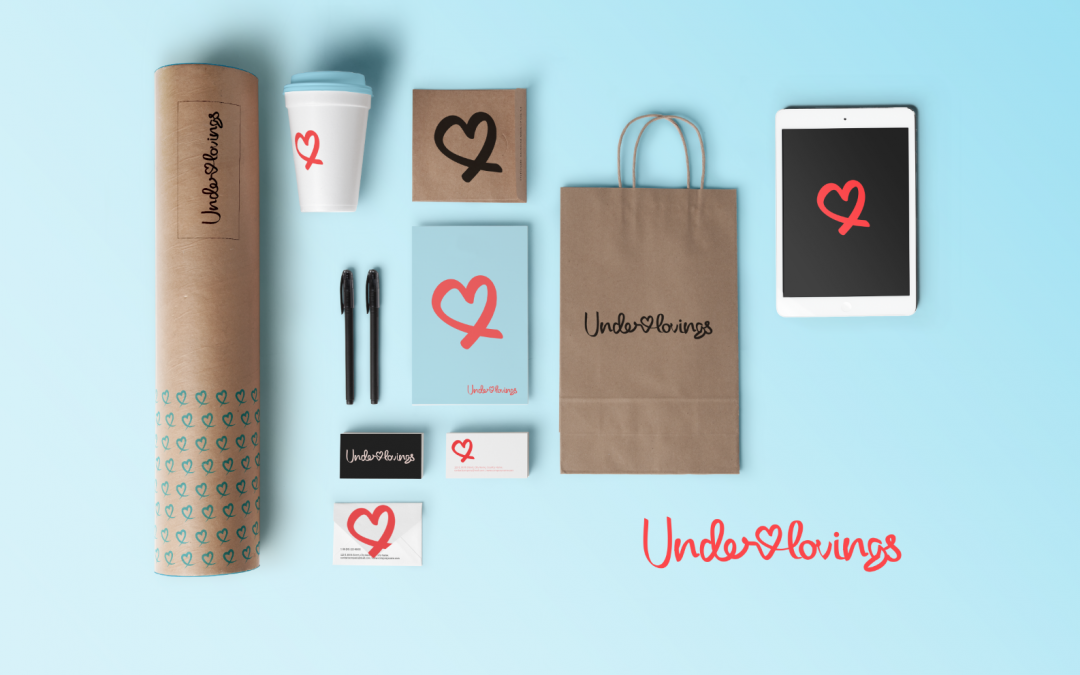If your company is a person, the brand is the personality. Why should you have a brand? Look at Apple. Other companies have the same qualifications to make computers, but Apple’s friends (“friends” is a more humane term than, “Target Audience”) remain loyal. Why? Branding.
Apple’s branding—or reason for existing—is that they believe in questioning tradition. Remember their “Think Different” campaign ads? They were simple: an icon like Jane Goodall, or Martin Luther King, “Think Different”, and the Apple logo… no computers. Apple’s friends don’t buy their computers because they need one, but because they believe as Apple believes.
What’s your “why”? What core ethos will cause your friends to rally round your product and stay loyal? Nail that in a sentence, and your brand strategy will come into view. Why should you have a branding strategy?

These different items clearly belong to one loving family.
Branding strategy benefits
- An emotional bridge can be drawn from your brand to friends who believe in your message. Once they’re on your radar you can learn their patterns, appear in their circles, and shine as a lighthouse in the darkness.
- Internal growth is stimulated. Knowing your ethos lets you hire employees who believe as you do, not just those who need cash.
- Part of Apple’s brand strategy is solving their friends’ pain points through sexy design, intuitive software, and ease of use. Your branding strategy will expose ways you can address your friends’ pain points better than anyone else.
- “Uh, I beg your pardon Sally, but your house is ablaze.” is the Inappropriate tone if your neighbor’s house is on fire. Companies without a branding strategy often lose friends by speaking to them in the wrong tone.
- Branding strategy lays the foundation for your brand story. Apple’s iPhone box was designed to take four seconds to slide open. Their research showed that’s precisely how long it takes to build anticipation to a crescendo.
- Apple understands that friend loyalty can be lost if you don’t go all the way with your brand story. Oversights in seemingly irrelevant areas like packaging create a glitch in the friend’s experience which can make them leave your relationship for the competition.
6 essentials of branding strategy
- Define your ethos
Start here, and you’ll always have a compass if your direction gets muddy in the future.
What are you passionate about?
Observe your thoughts and actions, note the reoccurring themes, and distill them into an ethos.
- Name your brand
You can go about this several ways:
– Name it after yourself (Versace)
– Name it after someone else (Tesla)
– State your business (Bavarian Motor Works)
– State an action (Shout stain remover)
– Remove a term from its typical context (Apple)
– Create your own term (UGG)
- Establish a government
If you recited a daily creed before work, what would it be? What set of rules would govern the behavior of your brand? Freedom? Justice?
Ask yourself what your competitors do that you wouldn’t? Examine your favorite social structures and break down their elements. These can be the building blocks for your system.
- Codify your communication
Decide how you’ll communicate internally and externally. Are you a hierarchy or egalitarian outfit? Should your employees walk on eggshells around you or call you by your nickname?
Are you selling a peaceful service or a passionate product? Are you advertising through fear or hope?
- Answer the how
Remember we said that Apple’s “how” was through sexy design, intuitive software, and ease of use? How will your product demonstrate your ethos? Are you a practical, or an entertaining product? Or perhaps a third-side approach?
- Face time
If brand is the personality of a company, then brand design is its face, or logo. Your logo design should be as carefully calculated as how you present your face.
Every design element has an emotion attached to it. A psychology. Colors, shapes, and, fonts can have a subconscious influence on friends.

Great use of logo design to unify all products.
A logo communicates the core values of the brand. Choose visual elements which reflect your brand, not necessarily your personal taste. Embrace your industry archetypes without mimicking competitors and work with a professional designer to create something unique, flexible and memorable.
Keep the ball rolling
After your brand’s personality and face are created, make the body: offline branding materials like business cards, stationary, flyers, and packaging. The internal organs are online materials such as website, email, and social media. The total design scheme translates to brand recognition. Eventually, people will recognize you only by your logo, corporate colors, and fonts.
Especially as a young business, branding is crucial. Since you’re not well known (yet!), branding helps distinguish your business and controls what the people think about you. A company with great design looks professional and gets taken seriously.
Brand new Life
Now that you know what a branding strategy is and how to create one, it’s time to spring into action. Take all of these factors into account and make your business like a complete walking, talking person. Breathe life into your creation.






